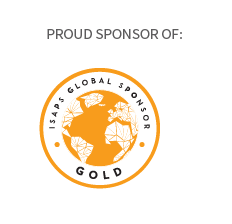Inverted nipple meaning, causes, and possible correctors
An inverted nipple also called retracted nipple or shy nipple is a condition where the nipple, is retracted inwards or turned in on itself, rather than pointing outwards, as is seen in common or typical anatomy. It can happen in both sexes. However, many patients feel alone because the condition is often classified as taboo and not talked about as much. Inverted nipples do not necessarily happen in pairs (87%), you could have just one inverted nipple.
Though not life-threatening, it is psychologically and physiologically damaging to an individual. The appearance can be cosmetically undesired and worrisome, as well as problems during breastfeeding in nursing women.
The main causes of inverted nipples are congenital, meaning that patients are born with the condition trauma, breast infection (mastitis), breast cancer, breast drooping, or others (such as breast surgery or Paget’s disease).
Inverted nipples are quite common, as many as 10% to 20% of females are born with one or more inverted nipples. Congenital nipple inversion is a generally benign condition. If they do not resolve with puberty, they will often persist, and repair may be indicated for breastfeeding, psychosocial, or cosmetic reasons in adulthood. Many patients come for correction/ treatment when faced with lactational difficulties. Many women are worried about breastfeeding with inverted nipples.
Pathological/acquired nipple inversion after puberty or breast development is more worrisome for malignancy or other abnormalities. If the inverted nipple occurs in adulthood or late in life, without breastfeeding, it is recommended to go to your doctor to check the reasons. If one or both of your nipples suddenly become inverted, it could be a sign of breast cancer, especially if other changes occur in the area (such as a lump or thickness in your breast or dimples or other skin changes on your breast). Your doctor may use a combination of procedures to diagnose the issue, including a breast exam, mammogram, breast ultrasound, biopsy, and MRI.
Generally, there are 3 grades of inverted nipples, and depending on where the patient falls it should be a cause for concern, inverted nipple corrector, or inverted nipple reconstructive surgery.
- Grade 1 inverted nipple, the nipple can easily be pulled outward, this type of inverted nipple is also referred to as shy nipple and will sometimes stand out on its own with cold or stimulation. The patient can still breastfeed with a grade 1 inverted nipple since the milk ducts are not affected.
- The main cause of grade 2 inverted nipple is fibrosis and slight retraction of the milk ducts. This means the nipple is pulled inwards by fibers into the breast causing it to be inverted. It can be pulled outwards, but not as easily as grade 1. The patient might have trouble breastfeeding.
- Grade 3 inverted nipples are when the condition is more severe. The nipple might not be pulled out at all, and breastfeeding is not possible. For this type, inverted nipple surgery or inverted nipple reconstruction might be necessary. Some people experience other medical issues such as rashes, sore nipples sand recurrent mastitis, and plugged milk ducts.
Management or treatment mainly depends on the grade of inversion. Inverted Nipple Correction Surgery is often the solution for many people who are negatively affected due to having inverted nipples, especially those who have grade 2 or 3 inverted nipples. The choice to undergo surgery is highly personal, like all surgeries. The surgery has the potential to improve the life of the patient by boosting their self-esteem, and confidence and/or easing the ability to breastfeed. The surgery is quick, straightforward, doesn’t require multiple incisions or bulky dressings, and is associated with minimal scarring.
Remember to do your monthly breast checkup, it takes 10 minutes, and it helps familiarize yourself with your breasts and could be helpful to detect any changes that may indicate some medical conditions.
GC Aesthetics®, A Confident Choice for Life™
Sources.
- Nagaraja Rao D, Winters R. Inverted Nipple. In: StatPearls. Treasure Island (FL): StatPearls Publishing; December 29, 2021.
- Danny Bonvissuto. Inverted Nipples. WebMD LLC. September 14, 2020. https://www.webmd.com/women/inverted-nipples-causes. [Last accessed 05/02/2022]
- Causes of Inverted Nipples. May, 2022. UK Health Centre. https://www.healthcentre.org.uk/cosmetic-surgery/inverted-nipple-causes.html. [Last accessed 05/02/2022]
*GCA does not provide medical advice, diagnosis, or treatment

